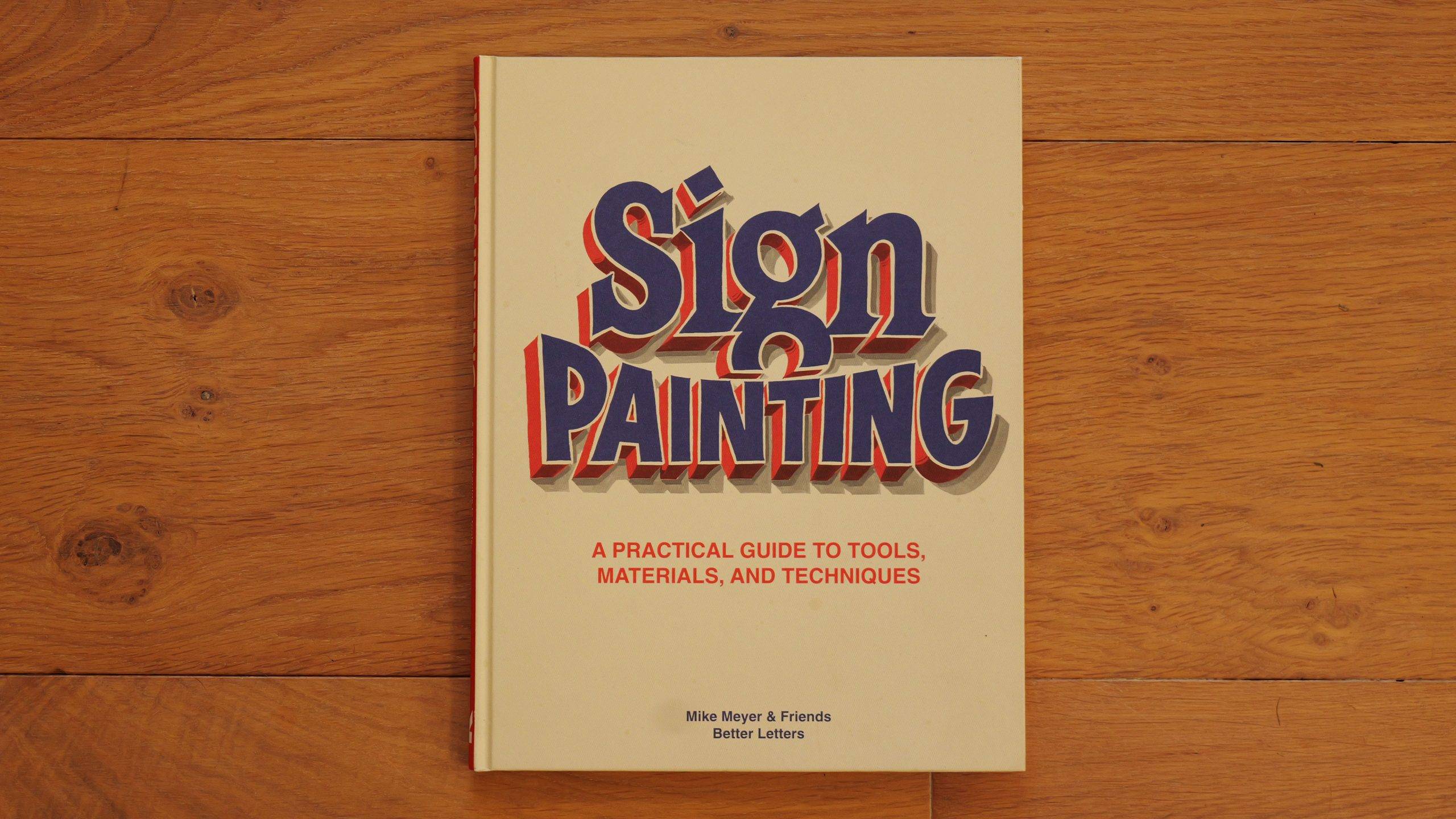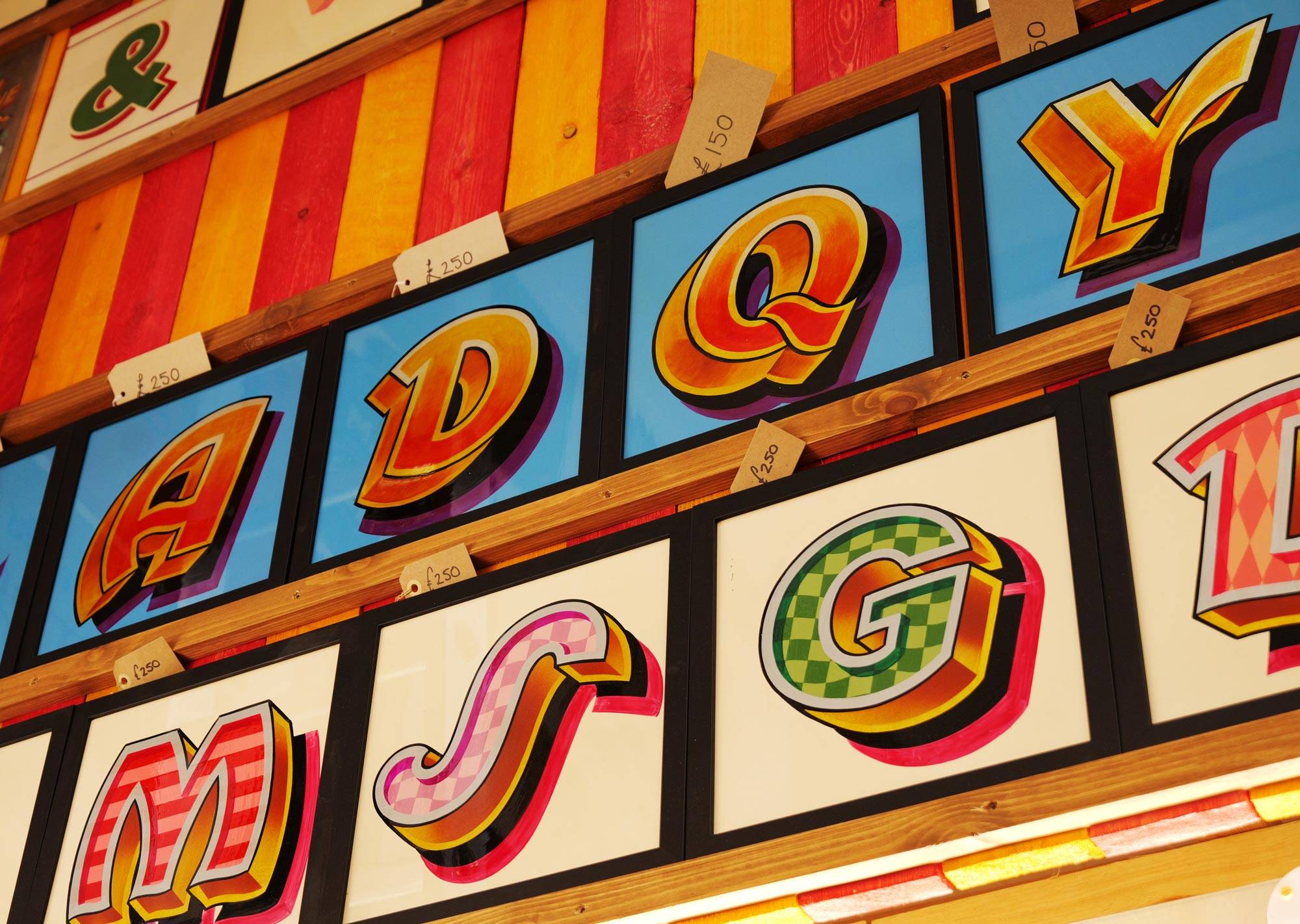A recent trip to the studio of renowned sign writer, Joby Carter, was just the inspirational experience you would have hoped for, with an eye-popping space crammed to the brim with the colourful, hand-painted letters of travelling funfairs.
Along with many others who headed down to Street, in Somerset, I watched as Joby (in true showman style) give start-to-finish demonstrations of his sign painting techniques, tools of the trade, and a preview of his sell-out courses, running several times a year. All of which goes to suggest that this once endangered craft (I’m tempted to call it folk art) might be seeing a resurgence as people turn their backs on digital for something more personal, offline, and unique.
I’ve always leaned into the hand-made aspect of my own work in making fonts, but it’s certainly left me thinking about how I can push this even further. Obviously, I had to buy his book, which is great and only available directly from Joby’s website. I’ve posted a short flick-through video with more details below, along with an extended sign painter’s reading list. Enjoy!
ALL THE FONTS OF THE FAIR by Joby Carter
Discover fancy lettering styles found at traditional British fairgrounds up until the 1960s with this second book from Joby Carter. Many of these vibrant, whimsical designs are missing from graphic design manuals and typography archives. This book helps continue their legacy and give them a new lease of life.
This full-colour book includes 26 hand-drawn fairground-inspired alphabets. Each alphabet has a reference guide with tips on how to accurately recreate the lettering alongside details about the origin of the style and photographs of variations of the lettering in use. The alphabets represent an enormous amount of hours in the workshop with each letter drawn, painted, and decorated by hand, ensuring it worked alongside the other alphabet letters and could stand up to scrutiny and be accurately copied and scaled.
Sharing the authentic, traditional skills of signwriting, which can be traced back to the 19th century, Joby Carter’s books are full of practical tips and guidance alongside stunning examples of hand-painted lettering through the decades.
This book is an ideal companion for the seasoned signwriter and the budding beginner.
£30 – Available at Jobycarter.com
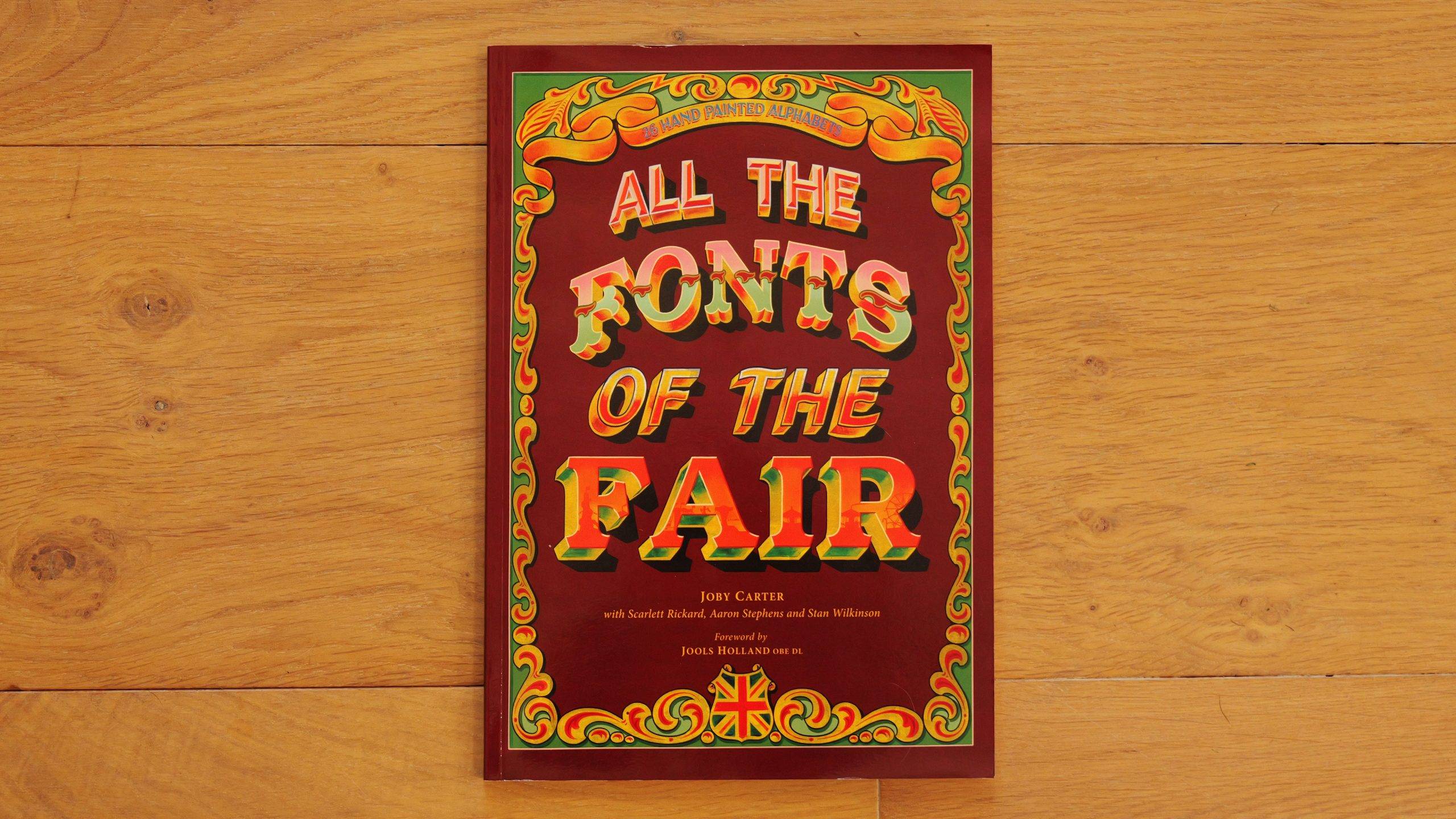
Further Reading:
BLAG Magazine:
BLAG is the world’s only print and online publication dedicated to sign painting craft, community, and culture. Every summer and winter, BLAG (in print) ships to Blaggers (paid members) around the world. Its 80 pages are free of advertising and packed with informative and inspiring articles and features. Back issues are available from their online shop, and they maintain an active website and email newsletter that’s well worth joining. VISIT BLAG >
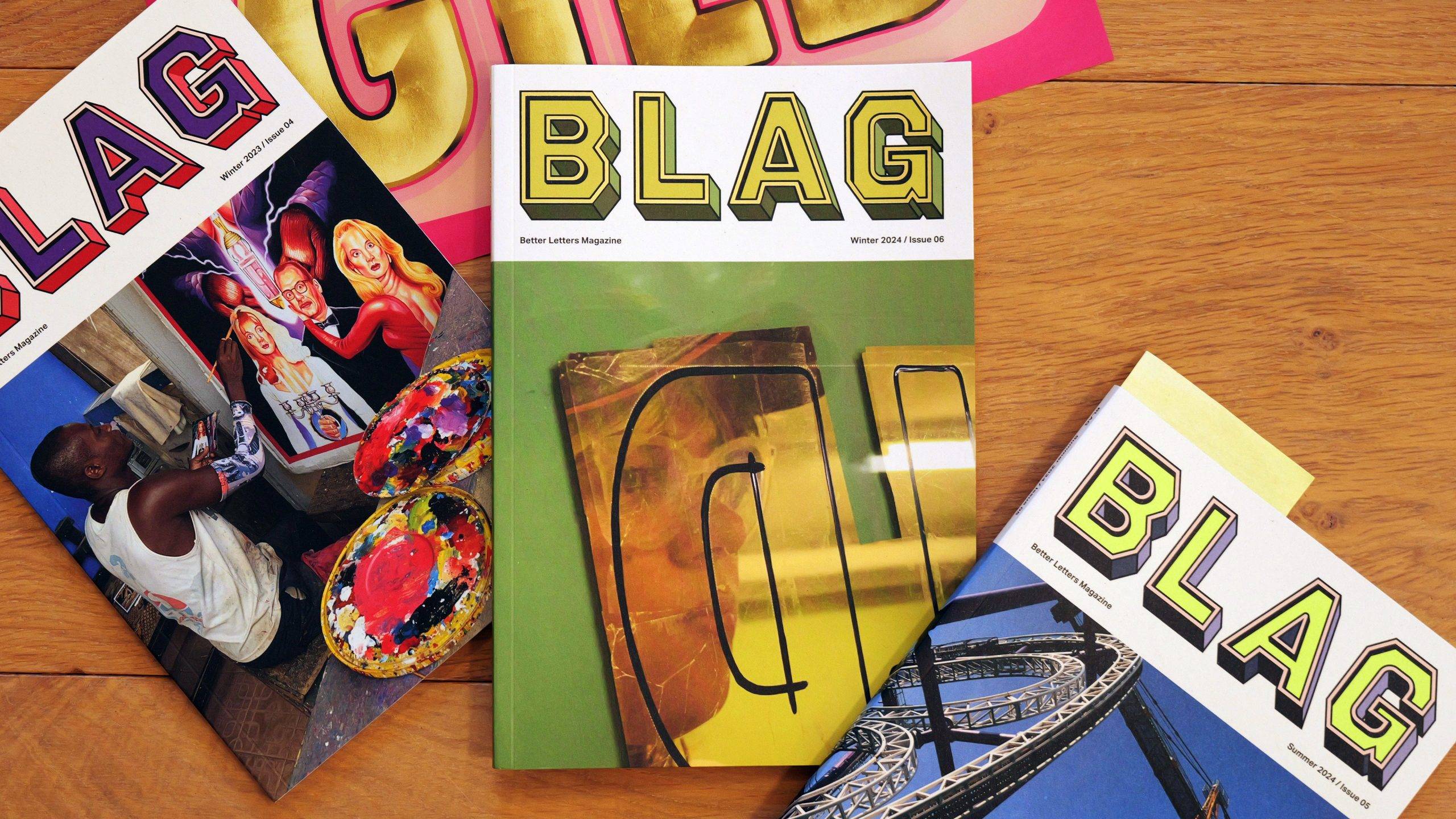
Sign Painters by Faythe Levine and Sam Macon:
There was a time-as recently as the 1980s-when storefronts, murals, banners, barn signs, billboards, and even street signs were all hand-lettered with brush and paint. But, like many skilled trades, the sign industry has been overrun by the techno-fueled promise of quicker and cheaper. The resulting proliferation of computer-designed, die-cut vinyl lettering and inkjet printers has ushered a creeping sameness into our visual landscape.
Fortunately, there is a growing trend to seek out traditional sign painters and a renaissance in the trade. In 2010 filmmakers Faythe Levine, coauthor of Handmade Nation , and Sam Macon began documenting these dedicated practitioners, their time-honored methods, and their appreciation for quality and craftsmanship. Sign Painters , the first anecdotal history of the craft, features stories and photographs of more than two dozen sign painters working in cities throughout the United States.
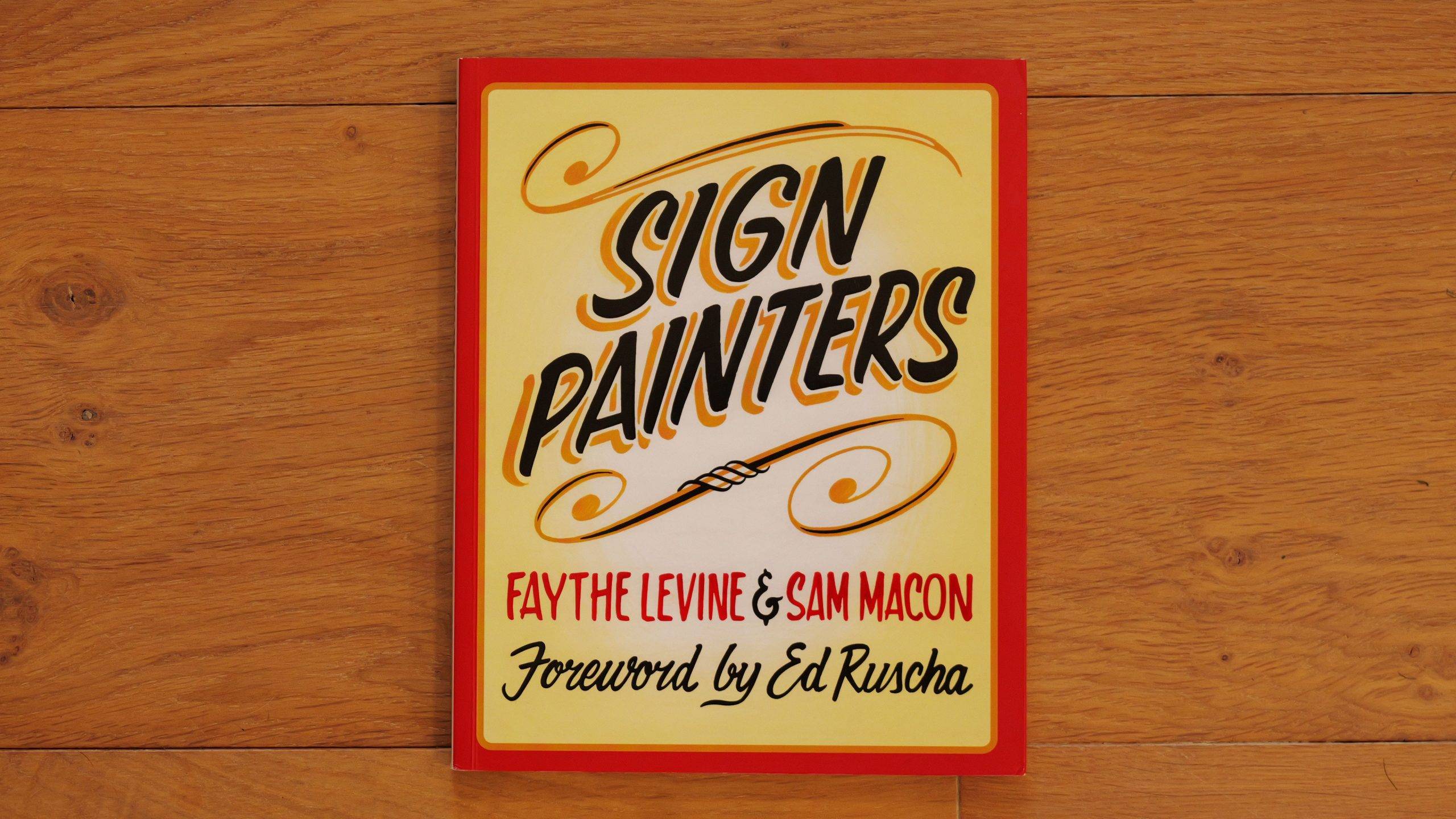
Sign Painting: A Practical Guide to Tools, Materials, and Techniques by Mike Meyer:
This book introduces the fundamentals of sign painting, allowing readers to learn about the tools, materials and techniques needed to create painted signs. All the basics are covered, from choosing and using brushes, paints, mahl sticks, dippers and pencils, to how to prepare and finish surfaces, transfer designs, mix paint and work with the brush. A gallery section of original alphabets, created for the book by sign painters around the world, provides visual inspiration and demonstrates a wide variety of styles and approaches.
